 Sunday/Weekend
Sunday/Weekend
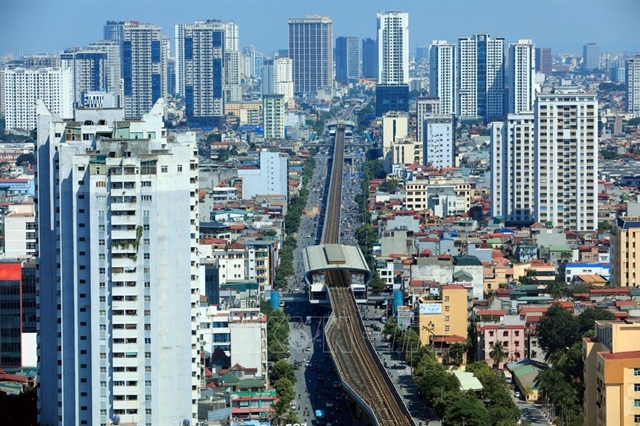
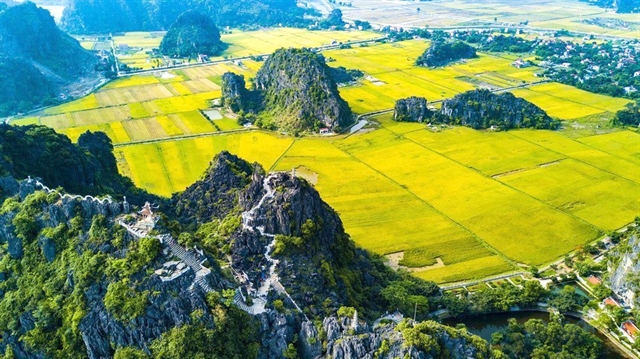 |
| When the rice is ripe, the scenery in Tam Cốc, Ninh Bình, is dyed golden yellow. VNA/VNS Photo Minh Đức |
Bảo Ngọc
The question of striking a balance between tourism and conservation was debated at length by numerous specialists during the 50th Anniversary of the Convention for the Protection of World Cultural and Natural Heritage earlier this month.
Even though there are many controversies, most experts see Tràng An in Ninh Bình as a model for how conservation and development can work hand in hand.
The Red River Delta province, formerly a cement-polluted landscape, has emerged as a heritage conservation and tourism development pioneer, topping the list of the best 50 vacation destinations as voted by a US travel website.
Success strategy
The Tràng An scenic complex encompasses 12,250 hectares and consists of the Tràng An ecotourism area, the Hoa Lư ancient capital relic site, the Tam Cốc Bích Động tourist area, and a part of the Hoa Lư special-use forest.
To be named a UNESCO World Cultural and Natural Heritage site in 2014, the Tràng An Scenic Landscape Complex had to meet global values in aesthetics, geology, geomorphology, and the habitation of prehistoric people, all of which were achieved through a systematic conservation strategy.
The area is also recognised as Việt Nam's and Southeast Asia's first mixed heritage site.
Bùi Văn Mạnh, director of the Provincial Department of Tourism, said that when Ninh Bình was re-established, the province was an impoverished area with the economy mostly dependent on agriculture.
The Provincial Party Committee passed a resolution for tourism development in response to difficulties in 2001.
This is the first tourism-related thematic resolution, shifting the focus of economic development from the construction materials sector to the tourism sector.
For this reason, the province has long prioritised zoning and temporarily prohibiting the exploitation of limestone mountains and special-use forests for tourism development and protecting natural landscapes and historical treasures.
Nearly four years after it was named a World Heritage Site, the UN culture agency has recognised Tràng An for its successful heritage management, which strikes a balance between conservation and development.
New paths to explore caves and monuments are continually added so visitors do not become overcrowded at heritage sites. Thousands of ferry drivers serve as passenger carriers, guides, and environmental conservationists, with their earnings increasing 3-4 times more than previously.
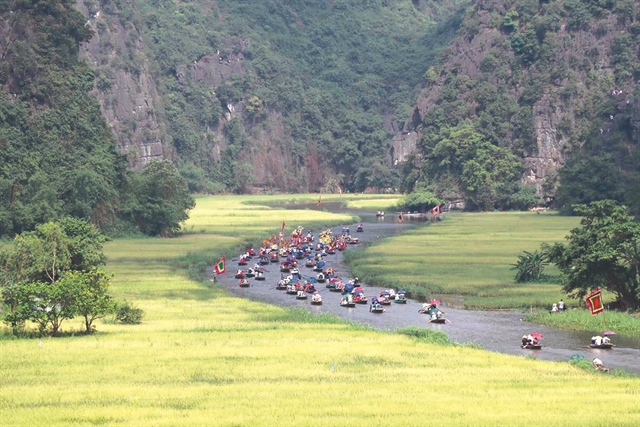 |
| Visitors travel by boat along the Ngô Đồng River. VNA/VNS Photo Minh Đức |
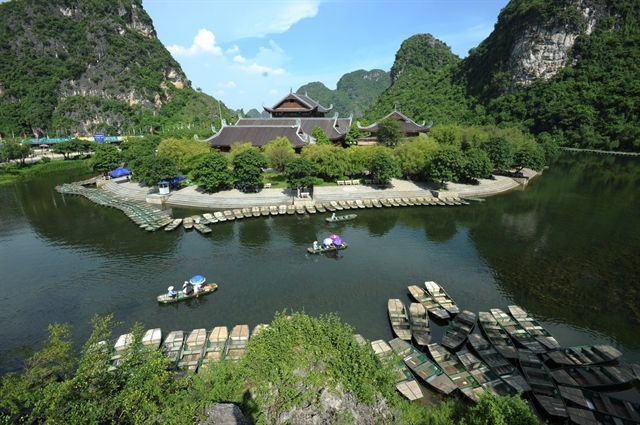 |
| Boat wharf in Tràng An tourist landmark. VNA/VNS Photo Minh Đức |
Thanks to this, the quality of local people's lives is gradually being enhanced.
Lưu Thị Dung, a provider of tourist services in Tràng An, said: "Whereas in the past we only raised livestock and farmed crops year-round, we now provide heritage protection and tourist services such as boating, tour guide, security, environmental sanitation, souvenir sales, and working in restaurants."
"We are happy to be the link between heritage and visitors, introducing and telling Vietnamese tourists and those from abroad about the natural beauty, historical significance, and traditional culture of our homeland."
In addition, the province has worked with UNESCO to conduct surveys and studies in Tràng An, yielding useful information for administrative purposes and scientific inquiry.
Evaluating the model for conservation and promotion, Dr Ryan Rabett from Cambridge University said: "This is a remarkable, one-of-a-kind paradigm in Southeast Asia, where local government, enterprises, and communities work together to preserve the heritage and promote tourism growth.
"Based on mutually beneficial outcomes, tourism profits are reinvested in conservation and archaeological research. In my opinion, this is a successful public-private cooperation paradigm for heritage management."
Challenges
The Tràng An Scenic Landscape Complex and other Vietnamese heritage sites confront numerous challenges in continuing to promote heritage values in compliance with the Convention.
Audrey Azoulay, director-general of UNESCO, has said that there are two significant obstacles to enforcing the Convention. The first is balancing development with the protection of natural and cultural resources.
"There is a reason why I came to Việt Nam -- a country with one of the highest economic growth rates in the world over the past two decades, but also a country that has made great efforts to guarantee that heritage preservation is not compromised for development. I had the opportunity to witness how the Tràng An Heritage Site successfully blends economic development and sustainable tourism while yet being able to preserve nature," she said.
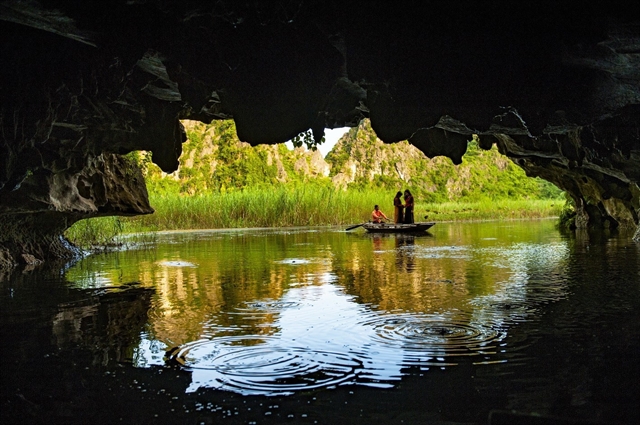 |
| Mystic Cá Cave in Ninh Bình's Vân Long Nature Reserve. VNA/VNS Photo Minh Đức |
According to Azoulay, this is why UNESCO selected Tràng An and three other world heritage sites to pilot a project on sustainable tourism to increase the benefits for local residents, especially women.
In Tràng An, UNESCO encourages women boat rowers to continue promoting this eco-friendly way of touring historic sites.
Azoulay believes climate change is another big challenge that heritage countries must face.
She also emphasised the importance of education, one of the areas of strong cooperation in instilling a sense of responsibility for heritage protection in every citizen.
"I hope that environmental protection, climate protection, and cultural protection will be included in the school programme for children so that they can become better people than we are," she said.
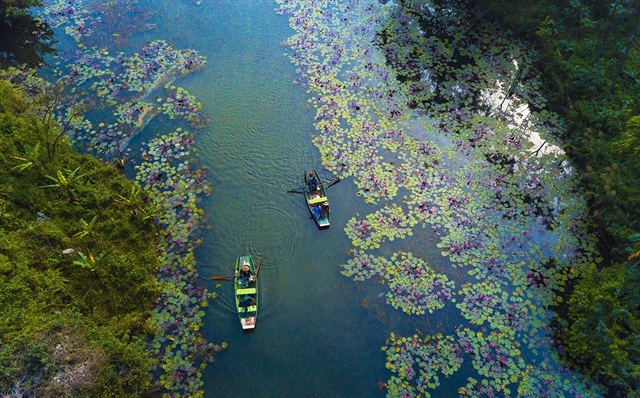 |
| Ninh Hải Commune, Hoa Lư, Ninh Bình, is home to the wild and enchanting beauty of Thung Nắng, a popular tourist magnet. VNA/VNS Photo Minh Đức |
Given these challenges, it seems fair to give heritage and culture the recognition they deserve so that all communities can preserve their cultural traditions while reaping their benefits in their daily lives.
"We must consider cultural policies as a strong tool for national actions, as Việt Nam has shown, and as a model for Tràng An," Azoulay said. VNS




